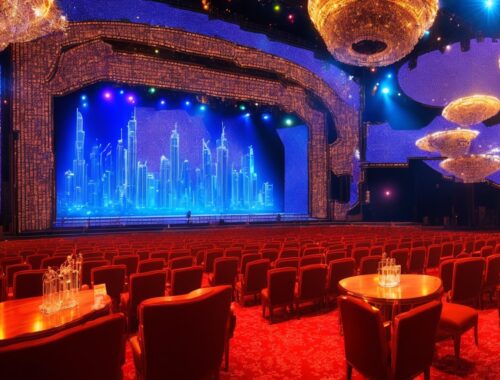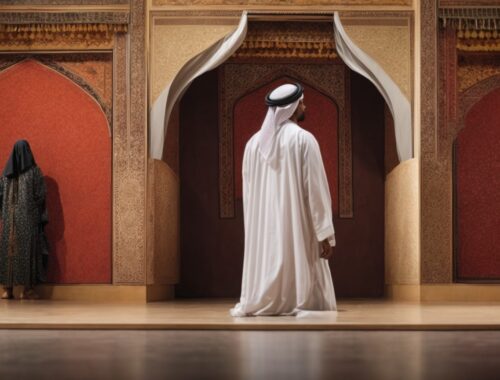Visualizing Theatre Set Designs with 3D Interior Rendering
Theatre set design is an essential element that brings narratives to life on stage. The interplay of lighting, props, and backdrops creates an immersive environment for the audience. Traditionally, set designs were conceptualized using sketches and physical models, which, while effective, had limitations in flexibility and realism. Enter 3D interior rendering—a transformative technology that offers a new dimension to theatre set visualization. For more information on how this technology is revolutionizing the industry, check this out.
The Evolution of Set Design
Theatre set design has a rich history, evolving from simplistic backdrops in ancient Greek theatres to the elaborate, movable sets of modern Broadway productions. Initially, designs were manually drawn and painstakingly constructed as scale models. While these methods allowed designers to convey their vision, they often lacked the ability to fully capture the dynamic nature of a live performance.
The introduction of 3D interior rendering has revolutionized this process. Now, designers can create highly detailed, virtual models of sets, offering a more accurate and flexible visualization. This technology allows for real-time modifications, enabling designers to experiment with different elements without the constraints of physical construction.
The Advantages of 3D Interior Rendering
Enhanced Visualization
One of the most significant advantages of 3D interior rendering is its ability to produce lifelike representations of set designs. Unlike traditional sketches, 3D renderings can simulate various lighting conditions, textures, and materials, providing a comprehensive view of how the set will appear during an actual performance. This enhanced visualization helps directors and designers make more informed decisions, ensuring that every detail aligns with the overall artistic vision.
Increased Efficiency
3D rendering streamlines the set design process, significantly reducing the time required to develop and modify designs. Changes that would have taken days or weeks with physical models can now be implemented in minutes. This efficiency not only accelerates the design phase but also allows for more iterative experimentation, leading to more refined and innovative sets.
Cost Savings
While the initial investment in 3D rendering software and training can be substantial, the long-term savings are considerable. By minimizing the need for physical materials and reducing labor costs associated with constructing and modifying physical models, theatres can allocate resources more effectively. Additionally, the ability to identify and resolve design issues early in the process prevents costly errors during construction.
Key Features of 3D Interior Rendering Software
Real-Time Rendering
Real-time rendering capabilities allow designers to see changes as they are made, facilitating immediate feedback and collaboration. This feature is particularly valuable in theatre set design, where the interplay of light and shadow is crucial. Designers can experiment with different lighting setups and instantly see the results, ensuring that the final design enhances the narrative and emotional impact of the performance.
High-Resolution Textures
The ability to apply high-resolution textures to 3D models is another critical feature of rendering software. This capability allows designers to replicate the look and feel of various materials, from rough brick walls to luxurious velvet curtains. By accurately representing these textures, designers can create more realistic and immersive set designs.
Advanced Lighting Effects
Lighting is a fundamental aspect of theatre, shaping the mood and guiding the audience’s focus. Advanced lighting effects in 3D rendering software enable designers to simulate various lighting scenarios, from natural daylight to dramatic spotlighting. These effects can be adjusted in real-time, allowing designers to fine-tune the lighting design to perfection.
Case Study: Transforming a Classic Play with 3D Rendering
Consider the case of a theatre company planning to stage Shakespeare’s “Hamlet.” Traditionally, set designers would create detailed sketches and build scale models to convey their vision. However, using 3D interior rendering, the designers can create a virtual model of Elsinore Castle, complete with intricate details and realistic textures.
By experimenting with different lighting setups, the designers can create a range of atmospheres, from the eerie darkness of the ghost scenes to the vibrant light of the court. They can also simulate various weather conditions, such as fog or rain, adding another layer of realism to the production. The result is a set design that not only enhances the narrative but also immerses the audience in the world of the play.
Practical Applications and Future Trends
The practical applications of 3D interior rendering in theatre are vast. Beyond set design, this technology can be used for virtual rehearsals, allowing actors to familiarize themselves with the set before it is physically constructed. It can also facilitate more effective communication between designers, directors, and other stakeholders, ensuring that everyone is aligned on the creative vision.
Looking ahead, advancements in virtual reality (VR) and augmented reality (AR) are poised to further transform theatre set design. With VR, designers and directors can walk through virtual sets, experiencing the design from every angle. AR can bring virtual elements into the physical rehearsal space, allowing actors to interact with digital props and scenery. These technologies will enable even greater creativity and innovation, pushing the boundaries of what is possible in theatre.
Conclusion
The integration of 3D interior rendering into theatre set design represents a significant leap forward for the industry. By offering enhanced visualization, increased efficiency, and substantial cost savings, this technology empowers designers to create more realistic and immersive sets. As the field continues to evolve, the potential for even greater innovation and creativity is limitless. The future of theatre set design is bright, and 3D rendering is leading the way.
You May Also Like

Top Theatres in Dubai for Experiencing New Works
August 13, 2024
The Impact of Cultural Diversity on Dubai’s Theatre Productions
August 13, 2024